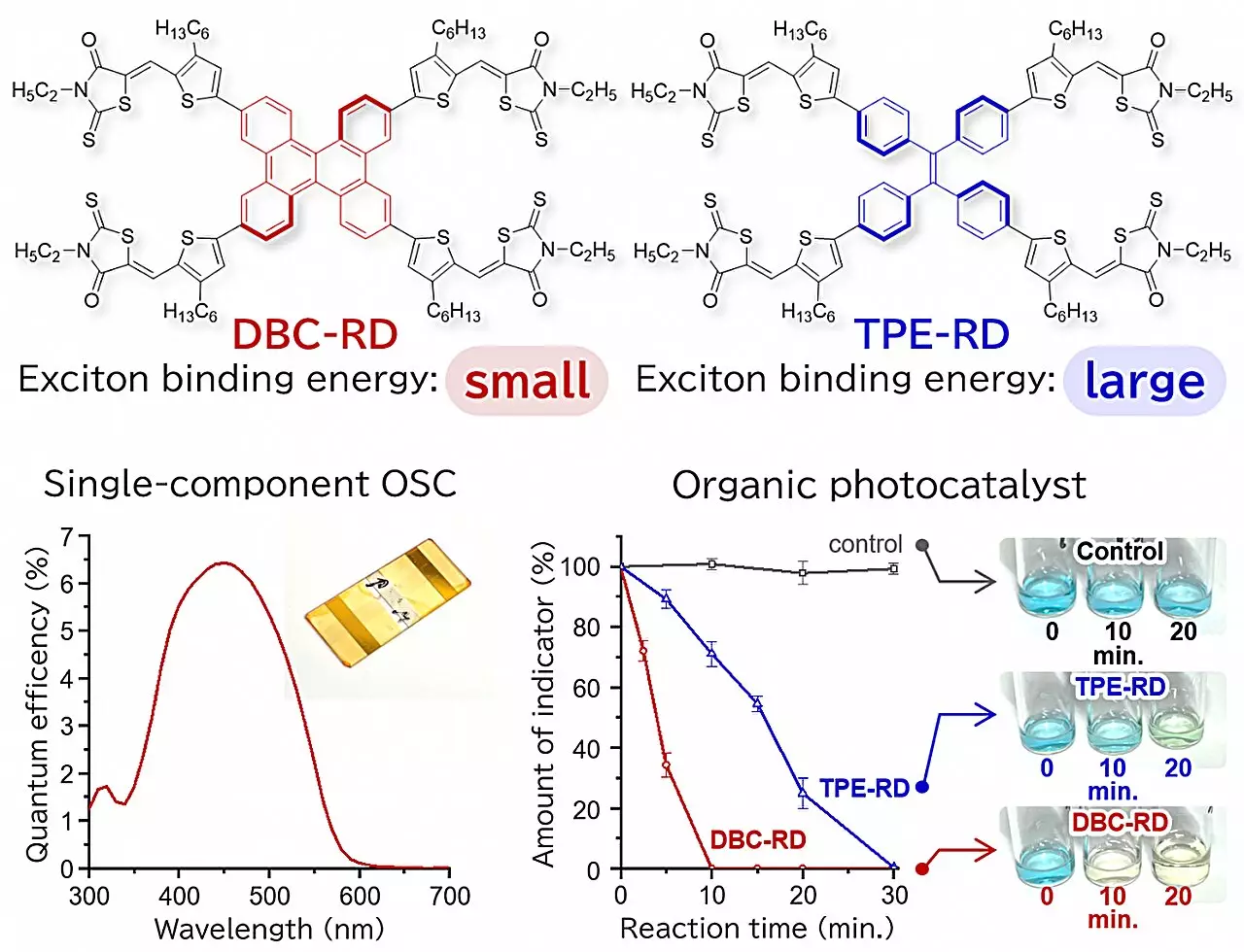The urgency for sustainable energy solutions has never been greater as we confront climate change and dwindling fossil fuel reserves. Solar energy stands out as a potent resource in this endeavor; harnessing sunlight is crucial for a sustainable and eco-friendly future. Central to this transition are optoelectronic devices—especially organic solar cells—which are capable of converting sunlight into electricity. Recently, a groundbreaking study from Osaka University has uncovered promising methods for improving the efficiency of these devices by manipulating the molecular structure responsible for light absorption.
The efficacy of organic optoelectronic devices hinges on the performance of light-absorbing molecules within them. Specifically, these molecules are responsible for converting light energy into free-charge carriers, which then facilitate the flow of electric current. A key factor in this process is the exciton-binding energy—the energy required to generate free-charge carriers. Lowering this exciton-binding energy enhances the performance of the device by making it easier to generate the charge carriers necessary for electricity production. Yet, designers face challenges when trying to craft molecules that exhibit low exciton-binding energy in solid states.
The Role of Molecular Aggregation
The Osaka University research team delved into the relationship between molecular stacking and exciton-binding energy. They focused on the aggregation of molecules, discovering that the way in which these light-absorbing molecules stack together can significantly impact their efficiency. Lead researcher Hiroki Mori illustrated this by comparing two similar star-shaped molecules—one with a flexible center and another with a rigid core. In fluid solutions, both types exhibited comparable behavior. However, in solid-state films, their behavior diverged sharply due to the rigid molecule’s ability to stack neatly, akin to organized plates. This efficient stacking yields a markedly lower exciton-binding energy compared to the flexible counterparts, presenting new horizons in device efficiency.
Experimental Validation and Implications
To substantiate their findings, the researchers utilized both types of molecules to construct a single-component organic solar cell and a photocatalyst. The results were striking; the device composed of the rigid molecule demonstrated significantly enhanced performance, attributed to its lower exciton-binding energy and the resulting increased generation of free-charge carriers. These promising outcomes suggest that careful molecular engineering can lead to advancements in the architecture of future optoelectronic devices.
This innovative approach offers a fresh perspective for the design of organic solar cells, emphasizing the importance of molecular aggregation in functionality. As stated by senior author Yutaka Ie, the ability to create molecules that aggregate effectively could reshape the foundational mechanisms of next-generation optoelectronic devices. This research not only establishes a critical link between molecular structure and device performance but also paves the way for the development of more efficient and accessible solar energy solutions, enabling significant strides towards a more sustainable energy landscape. As we continue to explore the potential of organic materials, such advancements will be vital in our journey toward maximizing renewable energy’s role in the global energy mix.


Leave a Reply